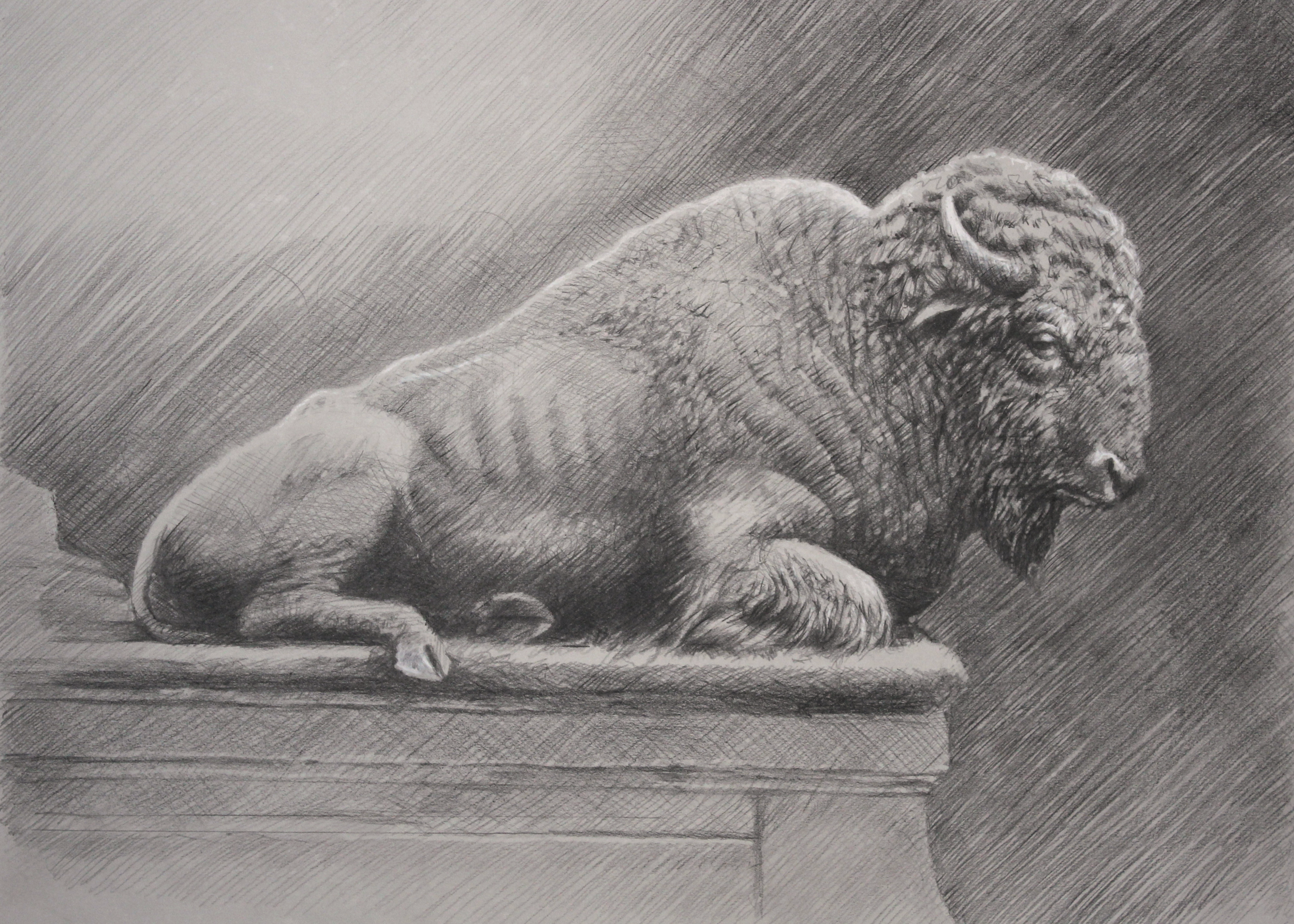Monumental Bison, 2019
Tim Svenonius
Monumental Bison, 2019, graphite and chalk on paper, 22 x 30 in.
The drawing Monumental Bison is based on a bronze figure, part of a monument to George Washington in Philadelphia that features life-size figures of certain native fauna. At the time the monument was dedicated, in 1897, the number of American bison was nearing its lowest ebb. A count in 1884 had estimated 325 living bison in the US, down from a peak population between twenty and thirty million. In 1887, the American Museum of Natural History sent an expedition as far as Montana to obtain a bison specimen, but found none. Considering its historical context, the edifice takes on a funerary effect rather than a heroic one.
Over a period of years I’ve made a number of paintings, drawings, and prints based on monumental figures of bison. In part, I am drawn by the form itself—what I might call the animal’s monumentality. At the same time I’m responding to the way the bison’s image, and other images of the natural world, become iconic—the picture becoming more pervasive as its flesh-and-blood counterpart gets erased. Rather than trying to capture the essence of the living animal, I choose to work from a representation, allowing all the strange subtext that comes along with it.

